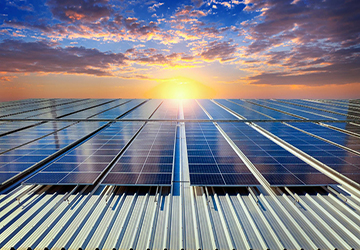Solar panels are things that make electricity from sunlight. They can help you save money and protect the environment. But putting solar panels on your roof takes work. It would help if you thought about many things, such as your roof, the weather, the rules, the money, and the outcome.
This article will tell you ten ways to put solar panels on your roof and give you some tips. You will also learn about different kinds of solar panels and how to choose the best one for you. Whether you want to hire someone, buy a kit, rent or share solar panels, or make your solar panels, this article will help you do it well. Read on to learn how to use solar power for your home.
Assessing Your Roof and Electricity Needs for Solar Panels
· First, evaluate how much power you need and how much roof space you have. The more panels, the merrier, but don't go overboard!
· Next, check if your roof's in good shape, facing south, and angled for maximum sunlight. If not, you must account for lower efficiency or extra costs.
· Make sure you understand all regulations and permits required where you live. Some areas incentivize solar, while others complicate it. Do your homework!
· Finally, determine your budget. Prices have dropped significantly, but panels, inverters, racks, and installation still vary. Shop around at different companies for the best value.
Once you've completed the basics, it's time to make this happen. Take advantage of nature's energy and kiss those electric bills goodbye! The planet will thank you, too.

Step-by-Step Guide to Installing Solar Panels on Your Roof
Do you want to use the sun's energy and pay less for electricity? You can do that by putting solar panels on your roof. This guide will help you learn how to do it. You will find out if your roof is suitable for solar panels, what rules you need to follow, what kind of panels you need, and who can install them. After reading this guide, you will be ready to use solar energy and help the planet.
Careful Planning
So, you want to go solar? Installing solar panels on your roof is a big decision, but if done right, it can save you money and help the planet. Before you climb up there with your toolkit, plan carefully.
Check Local Rules
See if your city or homeowners association has any regulations on solar panels. Get necessary permits to avoid issues down the road.
Assess Your Roof
Ensure your roof is in good shape, faces south, and gets lots of sun. Panels need maximum exposure to produce energy. Metal or tile roofs may require unique mounts. But before you start shopping for meetings, you must ensure your roof can handle them.
Condition
Before going solar, ensure your roof's ready. It should have at least 25-30 years of life and be free from damage or leaks. Check for cleanliness and structural integrity. Ideal conditions include a roof under 10-15 years old, with asphalt shingles. Metal or tile roofs can work with extra steps. Aim for a 20-40 degree pitch for maximum sun exposure, using tilt mounts for flatter roofs. Measure your roof to determine the number of panels needed (usually 10-20). Find a section with minimal shading.
Size
Choose a location with abundant direct sunlight exposure for ideal solar power utilization. Evaluate your roof's condition, ensuring it can match the solar panel system's lifespan, typically 25-30 years.
Measure the panel quantity based on your energy needs and roof space, with more panels providing increased energy production and reduced utility costs. Select between efficient but pricier crystalline silicon panels and more cost-effective thin-film panels. Obtain necessary permits from local authorities, often facilitated by your chosen solar company.

Sunlight
To go solar:
1. Ensure your roof is suitable – less than ten years old, facing south, and unshaded.
2. Check local rules and permits, and consider your homeowner association's regulations.
3. Calculate costs, explore incentives, and compare panel options.
4. Choose between efficient crystalline or space-saving thin-film panels.
5. Determine the number you need based on energy requirements.
Regulations
Before you slap some panels on your roof willy-nilly, check your local regulations. Many areas have rules about solar panel installation for safety, aesthetics, or historic preservation. You are restricting panel size or placement. Some limit panels to a % of your roof size or ban them from street-facing areas. You are imposing homeowner association rules. If you have an HOA, check what they allow. They may restrict panel type, size, or placement.
Cost
The amount to install solar panels can vary significantly depending on the size of your system, the components used, and whether or not you take advantage of tax incentives. On average, residential solar systems in the U.S. range from $10,000 to $30,000 after tax benefits. The good news is that solar costs have decreased by over 70% in the last decade and continue to drop. The federal solar investment tax credit (ITC) allows you to deduct 26% of the total expense from your taxes, and states often offer extra rebates.
Although the initial cost might seem high, solar pays for itself over the system's 25-30-year lifespan through energy savings and incentives. Consult local installers for customized estimates, incentives, financing, and ideal system size, and decide to cut energy bills and reduce your environmental impact.
Types
Check if your roof condition can support solar panels. The roof should be less than ten years old and made of asphalt, steel, or concrete. Determine the size of your solar system based on your average electricity usage. For most homes, a 3 to 8-kilowatt system is good.
Final Thoughts
You now have the power to harness the sun's energy and lower your electric bills. Follow the steps, do your research, and take your time. While the initial investment may seem steep, you'll reap financial and environmental rewards over the panels' lifetime.
So call to schedule an assessment, pick out your panels, and prepare to join the solar revolution. The sun is shining, and the future is bright - your roof is waiting. What are you waiting for? Your solar adventure awaits!


